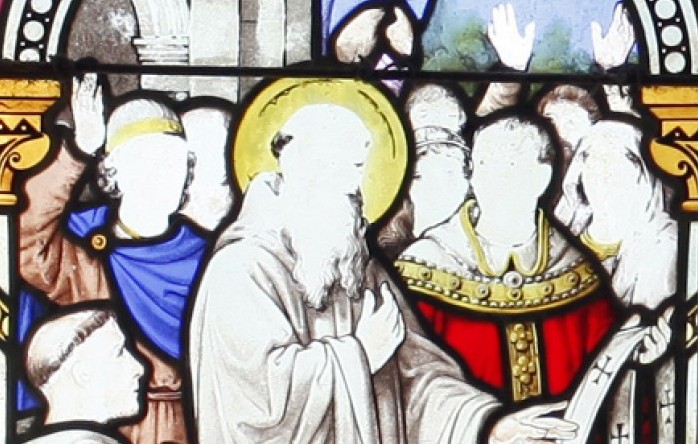
History has taught France the dangers of seeing a dominant religion play a leading role in public policy. Yet it has also left this secular nation with a treasure trove of cathedrals, churches, monasteries, altarpieces and religious-theme paintings, sculptures and stained glass.
As foreign travelers in France—atheist, agnostic or theist—we are inevitably drawn to these site and objects, to their artistry, craftsmanship, age and splendor.
A great many of them aren’t be found in guidebooks, even in regional guides. They are nevertheless as noteworthy as they are obscure, as central to the lives of few as they are off the beaten track to most, as revealing of France’s Catholic heritage as they are of its traditions of artistry and craftsmanship. And many of them, if they’re to be preserved, are in sore need of restoration.
Numerous small but passionate associations exist throughout France to honor that heritage, to preserve it, and to carry it into the future. To complement their meager associative resources for restoration they seek funding from various levels of government (the primary source of “giving” in France), from cultural foundations, and from other private sources.
One of those private sources is the French Catholic magazine Pèlerin (Pilgrim), which recently announced its selection twelve sites, structures, and works of art whose preservation and restoration will benefit from its 20th annual “A Heritage for Tomorrow” (Un Patrimoine pour demain) awards.
The names of the villages in which the awardees are located (Saint Martin le Hébert, Puichéric, Andrest, Verniolle, etc.) are unlikely to ring any bells. Many of them are far removed from the general routes of tourisms, even for the French. I mention them here not to encourage you to head their way specifically, rather as a reminder of what discoveries can be found by hitting the back roads of France, stopping in a village where nothing much seems to be happening, and getting curious—“Got heritage?”
The 2010 Pèlerin awards will go to preserving and restoring:
– stained glass windows in Normandy,
– a painting in Burgundy,
– a Way of the Cross and a processional banner in Brittany,
– an organ in Languedoc-Roussillon,
– an altarpiece, a mural painting, a painted ceiling in a chateau and a fresco at different sites in Midi-Pyrénees (southwest),
– a monastery being converted into transit accommodations for pilgrims in Charante-Maritime (central west),
– a pieta in the Alps,
– and an old mill transformed into an electrical generator in the Loire Valley.
The amount of the awards, mostly ranging from 1500 euros ($2100) to 4000 euros ($5600), with 10,000 euro ($14,000) for the mural painting, may not fully fund each restoration, but they allow a project to go forward through financial support that can help coalesce a budget and by providing moral support that encourages local interests to pursue their cause.
A thirteenth award of 5,000 euros ($7000) was given to a young artisan in Languedoc-Roussillon, Emilie Marconnet, to help her develop her workshop specialized in the restoration of furniture and other woodwork.
Pèlerin is particularly interested here in the defense of the historical, spiritual and artistic heritage so as to transmit them to future generations of the faithful, of course, and, potentially, to the wider community, including the back-road traveler. In fact, though the jury’s selections naturally have a Catholic slant, the selection criteria are notably similar to that traveler’s criteria for deciding where to stop, since they include:
– the cultural, artistic or religious interest of the work,
– the accessibility to the public and
– local development surrounding the project
The jury also considers the feasibility of the restoration project and the urgency of the situation and, perhaps most importantly, that the project have a certain amount of local support and potentially wider interest.
Over the past 20 years, Pèlerin has therefore supported 230 projects throughout France, with Brittany and areas southwest France (Languedoc-Roussillon and Midi-Pyrénées) being the most prized regions. A jury is comprised of various specialists and members of the press, along with an honorary president, who this year was the designer Jean-Charles de Castelbajac. Several prizes were given in partnership with other associations and publications interested in specifically Catholic issues or rural preservations.
Further details (in French) about the Pèlerin’s “A Heritage for Tomorrow” awards along with links to images and descriptions of each of the recipients can be found on Pèlerin’s website.
© 2010, Gary Lee Kraut

